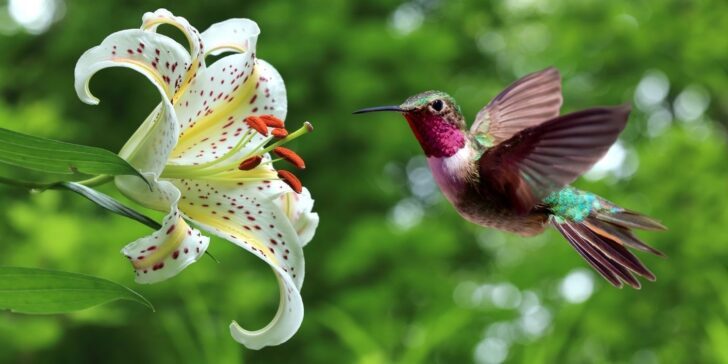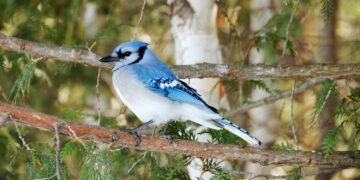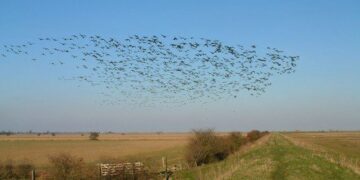There are 338 known species of the hummingbird, all of which belong to the biological family Trochilidae.
All hummingbird species can be naturally found in the Americas, with the majority of species living within Central and South America in tropical regions.
A few species can be occasionally found as far north as Alaska, but they tend to only migrate there instead of living there throughout the year.
Hummingbirds have long been admired for their beauty and agility, and today we’re going to take a look into what makes these adorable feathered friends so fascinating.
One species of hummingbird is the smallest bird in the world.
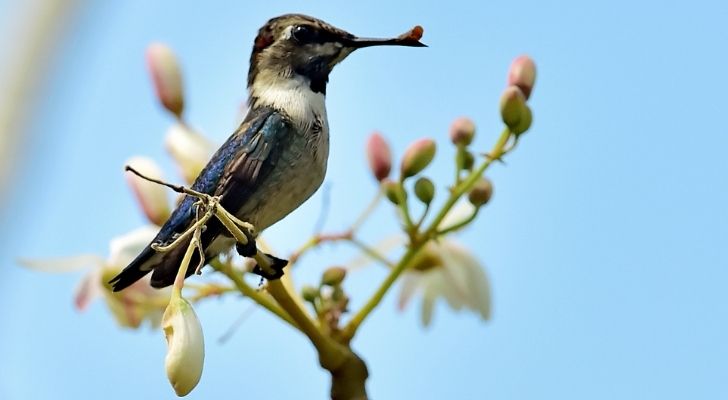
The majority of hummingbird species are small enough as they are, with most species of hummingbird measuring a tiny 3-5 inches (7.5-13 cm) long!
One particular hummingbird species wins the award of both the smallest hummingbird and the smallest bird in the world.
It’s called the bee hummingbird (Mellisuga helenae), and it measures just two inches (5 cm) long!
The bee hummingbird is native to Cuba and weighs in less than 0.07 ounces (2 g). That’s less than a US penny!
The majority of other species don’t weigh much more, though, averaging out at around 0.11 ounces (3 g).
It’s theorized that the bee hummingbird is smaller than the rest of the hummingbird family.
It evolved to gather nectar from smaller flowers, giving it an advantage over its larger cousins.
Hummingbirds have to eat up to eight times every hour!
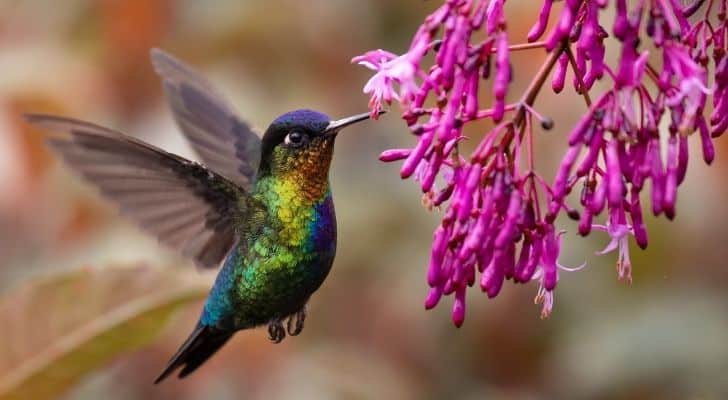
The average diet of a hummingbird generally involves both nectar and small insects.
Nectar is a sweet liquid made of fructose, sucrose, and glucose found in many flowers.
Hummingbirds can’t live entirely off nectar, though, as it’s simply a form of sugar, making it very low in any other nutrients.
To balance out their diet, they feed on insects while they’re during flight, often hovering in the middle of a swarm of insects and snapping them up.
Neither of these sources of food can compensate for the amount of energy that a hummingbird uses while flying, though, and as such, they need to be constantly feeding!
Most hummingbirds don’t like the cold.
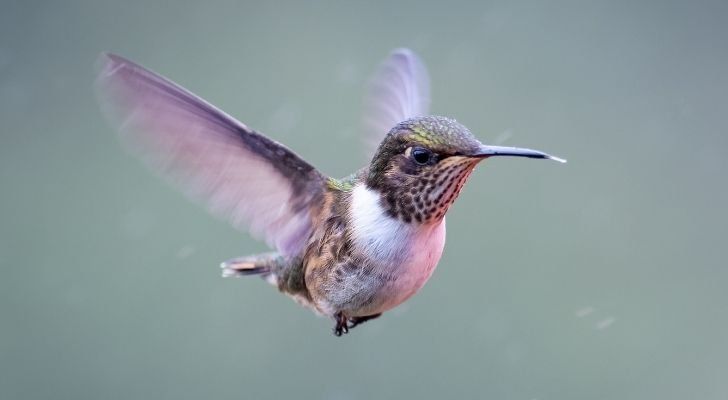
As we’ve mentioned previously, the majority of hummingbird species are migratory birds.
Most hummingbirds migrate to the tropics during winter, with those species found in the north heading south and those normally living south of the tropics heading north.
With that being said, there are still some hummingbirds that can be seen in winter.
The Rufous hummingbird has been found spending winter in North America,
although this isn’t always the case. When it wants to, the Rufous hummingbird will migrate up to 3000 miles (4828 km) in total, from Alaska to Mexico.
Hummingbirds are the only birds in the world that can fly backward.
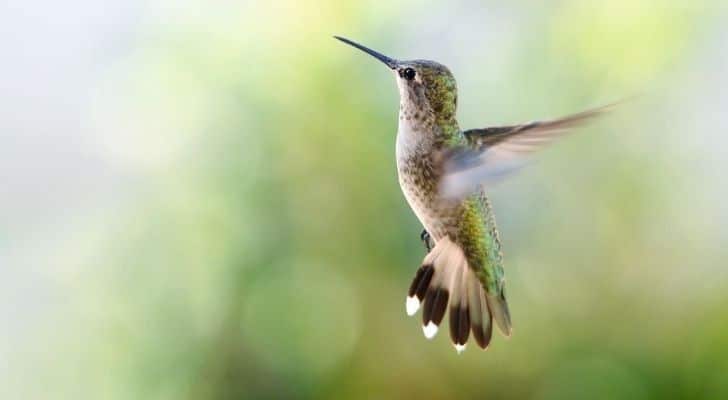
Hummingbirds were most likely named so for the sound their wings make when they beat them rapidly.
With this in mind, it’s no small wonder that the flight of hummingbirds has long been studied.
Thanks to modern technology, we now have a much clearer understanding of how hummingbirds actually fly and what makes them different.
Some methods included high-speed cameras and wind tunnels, which captured larger hummingbird species beating their wings at rates of 12 beats per second and smaller species beating theirs more than 80 times per second.
They’re swift fliers, too, with some species reaching top speeds of 34 miles per hour (54 km/h)!
Oh, and they can fly backward; how cool is that?
Hummingbirds are ridiculously tiny.
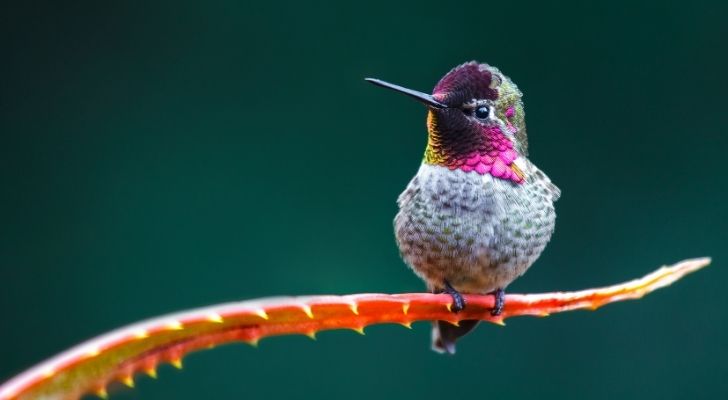
Many of us have spotted many bird nests throughout our lives, but have you ever spotted a hummingbird’s nest?
I certainly haven’t, and there’s a good reason for that.
Their nests are delicate things of beauty, commonly found nestled deep within bushes or between the forks of small branches.
They are quite commonly made out of moss, spider silk, and other dainty bits and pieces, making them a true sight to behold.
Another reason they’re so hard to spot is simply down to their size. Nests of the smaller hummingbird species can be half the size of a walnut!
Hummingbirds have many natural predators.
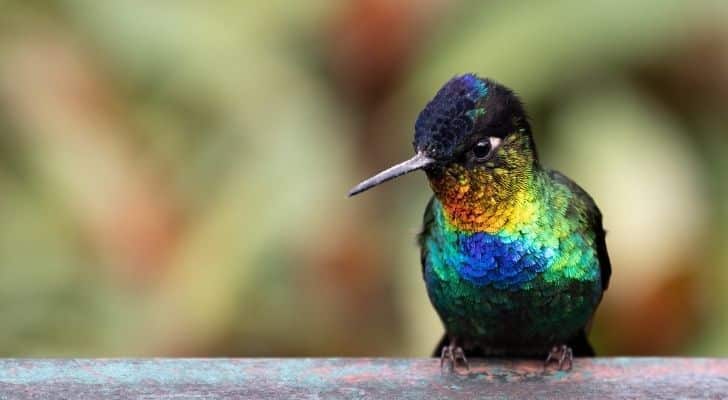
It comes as no surprise that a bird of such small stature has a larger pool of predators, even when you consider their incredible agility.
Really, it just comes down to the fact that the smaller a creature is, the smaller a predator needs to be, and as such, there are simply more.
The most common predators of hummingbirds range from reptiles such as lizards and snakes all the way through to insects.
Yep, insects. Some of the larger species of praying mantis family are able to catch hummingbirds while in mid-air.
Even spiders like the orb-weaver have been known to catch hummingbirds in their web.
Hummingbird eggs can weigh as much as 10% of their mother’s body weight!
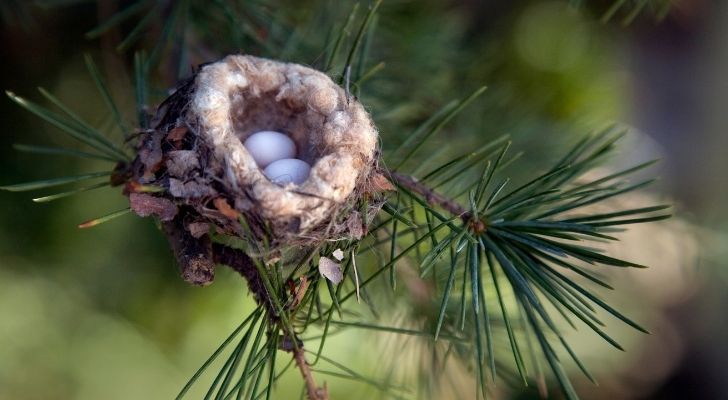
Yep, you heard that right.
Can you imagine squeezing out an egg that weighed one-tenth of your body weight?
I certainly don’t to think about it! While they weigh so much proportionally, their eggs are actually the smallest bird eggs in the world.
On average, a hummingbird’s eggs can measure less than 0.5 inches (1.27 cm) long and are smaller than a jellybean!
Hummingbirds hibernate at night, so they don’t starve.
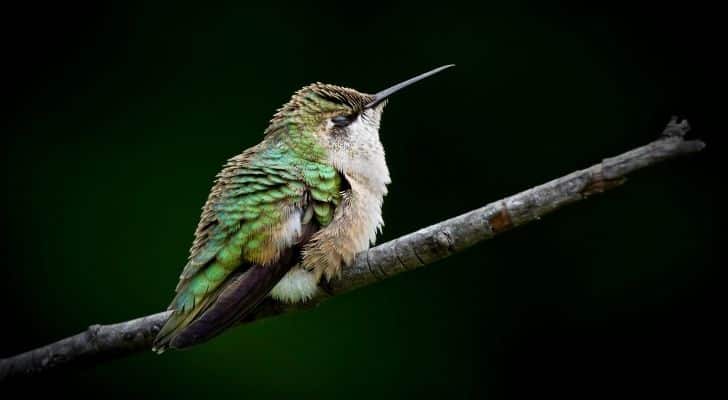
Hummingbirds have speedy metabolisms, which means that any food they eat gets processed and used up so quickly that they almost constantly need to eat.
In fact, to keep their energy levels up during the day, they eat around half their body weight!
If a hummingbird were to sleep as most other animals do, they would starve to death.
To survive the night, a hummingbird will instead enter a deep-sleep state known as torpor, which essentially slows its entire body down.
Their heart rate drops from 1000+ beats per minute to less than one hundred, and their core temperature drops from 104 °F to 64 °F (40 °C to 18 °C).
Although this dramatic change allows them to survive the night, they still lose up to 10% of their body weight in the process!
Hummingbirds are one of the most aggressive species of birds!
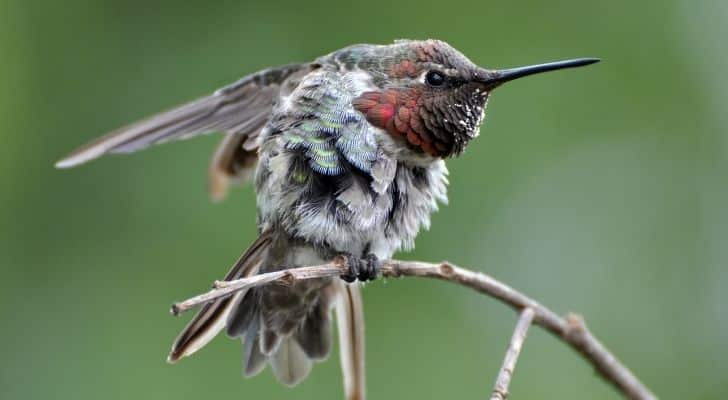
When you look at a hummingbird, you don’t stop and think, “Wow, what an aggressive bird, I’d better watch out!”
The primary reason we as humans aren’t terrified of hummingbirds is simply down to their size.
They’re too tiny to be considered a threat. In the bird world, this is a different story.
Hummingbirds have been known to aggressively defend their territory, often fighting off much larger birds such as crows, jays, and even hawks!
Hummingbirds had special importance to the Aztecs.
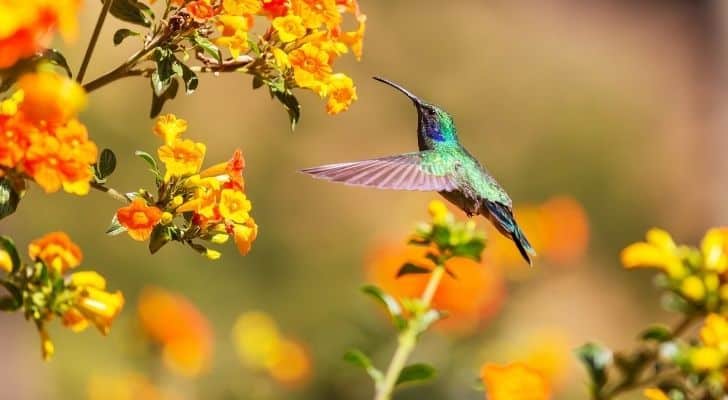
In fact, one of their most important gods, the god of sun and war, was often associated with the hummingbird.
Many Aztecs would wear talismans that were either made from the bones of the hummingbird or were crafted out of some material to represent the bird.
It was said that such talismans brought vigor to the wearer, giving them increased energy and an advantage in warfare.
It’s no small wonder that hummingbirds have been an important cultural icon for thousands of years.
There’s simply something magical, even mesmerizing, about how they can seemingly float in mid-air while drinking nectar.
Combine this with their small yet feisty nature, and it’s no real surprise that the Aztecs associated this tiny bird with their god of war!

